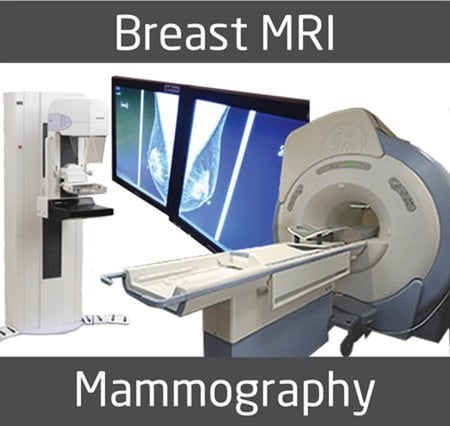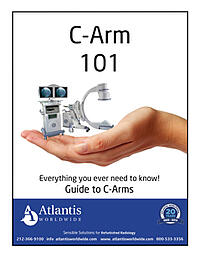In the past few years, numerous studies have been published about which is the right technology to detect breast cancer early. So who wins the great debate: Mammography or Breast MRI?
Mammograms use low doses of radiation to image the breast. The procedure is uncomfortable, awkward and often painful. Ask any woman who has had one! While mammography can miss some tumors, there are some cancers that can only be seen with it.
Breast MRI uses a powerful magnet to image the breast—without radiation exposure. This relatively new, highly specialized test takes approximately 45 minutes, during which time patients are asked to remain very still in order for the test to be as accurate as possible.
Breast MRI is more sensitive at detecting most invasive (and the majority of noninvasive) cancers. MRI can also find some tumors that a mammogram won’t. While an MRI is more sensitive than mammography, it can also deliver false positives. This can lead to ultimately unnecessary follow-up imaging and/or biopsies. It’s also important to perform the breast MRI at days 3-14 of a normal menstrual cycle, as some false positives are actually related to hormonal changes.
A study in the New England Journal of Medicine last year looked at 969 women who had already been diagnosed with cancer in one breast. It found that in 3.1 percent of these women, MRI found cancer in the other breast that didn't show up yet on mammogram. In addition, after reviewing more recent studies, the American Cancer Society recently recommended that any woman with a greater than 20-25% lifetime risk for breast cancer should consider undergoing screening with BOTH mammography and Breast MRI. The American Cancer Society recommends against MRI screening for women with a lifetime risk of breast cancer that’s less than 15 percent.
Breast MRI Doesn’t Replace Mammography—It Complements It
First of all, research shows that mammography reduces mortality from breast cancer by up to 30 percent in women ages 40-74. Breast MRI is still a relatively new technology and no research or study has been performed to document the overall mortality reduction from Breast MRI. In fact, Breast MRI is not even standardized yet in the U.S. It’s also expensive (approximately five to eight times more than a mammogram). Current limitations on health care expenditures contribute to the reluctance to have all women undergo this study.
However, there are women who would benefit from a Breast MRI study:
- Women with Silicone Breast implants
- High Risk Women (Those with 20-25% lifetime risk)
- Patients where breast cancer recurrence is suspected
- Those who have a new breast cancer diagnosis, to determine the extent of cancer
- Women with hard to assess abnormalities that have been seen on mammography or ultrasound
Women who should not undergo MRI study include:
- Patients with metal present in their body
- Patients with a pacemaker
- Patients who are allergic to contrast agent
The role of Breast MRI is still evolving and continues to be studied, and can’t be considered as a substitute for mammography. When used prudently and appropriately in high-risk patients with dense breasts, Breast MRI is a smart step toward diagnosis.
If you are interested in adding Breast MRI or Mammography System to your practice, hospital or clinic, make sure you talk to an expert first. He or she can help you determine which system is ideal for your practice. You’ll also be able to explore options like refurbished or used MRI and Mammography Systems, which come with impressive warranty and service contracts. Contact an expert at Atlantis Worldwide today to learn more.
Call Alex Silbergleit 212-366-9100 x190 or alex@atlantisworldwide.com
Other blogs you may have missed:
- The Difference Between Digital Mammography and Tomosynthesis
- Analog or Digital Mammography Equipment: Which is right for you?
- CAD + Mammography: The Perfect Combination
- Before You Order That MRI: A Checklist
Meet the author: Vikki Harmonay





